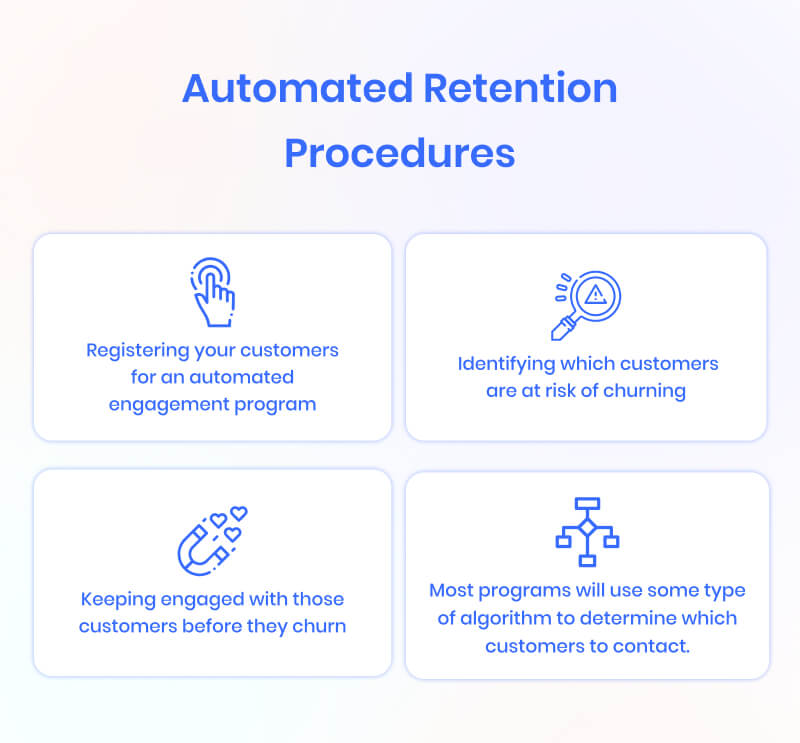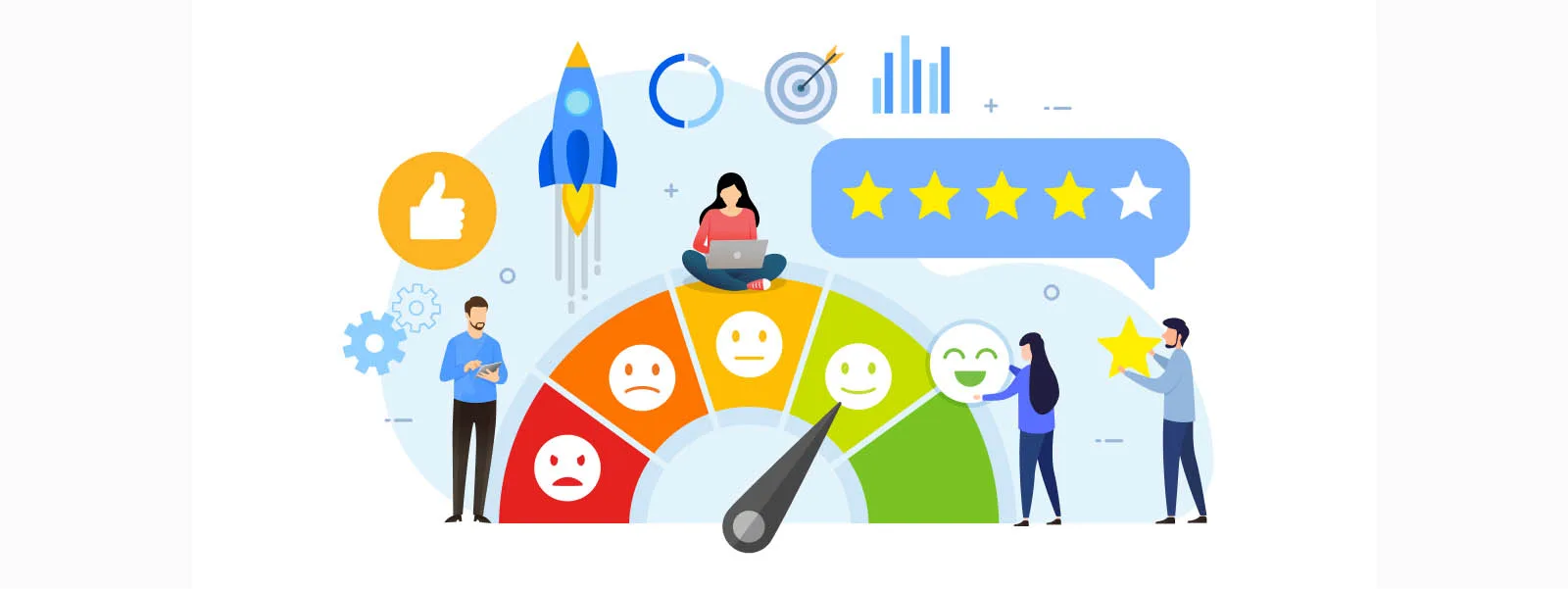Effective Customer Engagement Model & Best Practices
- August 31, 2022
- 10 mins read
- Listen

The customer engagement model is a method where the customer engages with both the product and the business. When a customer engages with the business, they get help and support when they need it.
An engaged customer is one who becomes emotionally connected to a brand. Once this connection is made, the customer will be loyal to that brand and its products or services.
If a business is not engaged with its customers and delivering on their needs, then there is room for new competitors to get into the market.
In this article, I will demonstrate the best practices for the customer engagement model and effective ways to increase customer engagement.
What is a Customer Engagement Model?
A customer engagement model is a process that you use to approach your ongoing relationship with your customers. This process, known as customer success, is the difference between running a business and operating a business. It’s where the volume of work is less important than the value that you deliver to your customers.
Simply put, every business needs to have a way to engage with its customers online. But what are the best practices for the customer engagement model and how exactly do you do it?
Customers will voluntarily opt-in to update their contact information on a website or mobile app through the use of registration or a newsletter signup form. By filling out this form and submitting it, they are giving you permission to engage with them via email.
However, if you don’t have a plan for how you’re going to use this information, then it’s just not going to be worth much to your business for engaging and managing customer retention over time.
Why Are Customer Engagement Models Important?
When we talk about customer engagement activities, there are many components that we could be talking about. Many businesses will have a different definition of what they need to be doing from an engagement perspective.
However, some core fundamental components should be included in most engagement models.
Guided: It focuses on the information available at each point in the experience and is used often when a business has limited resources and engagements are interactive, like one-on-one conversations with a salesperson.
Serial: Its focus is on creating a series of engagements that lead toward a goal. Salespeople will funnel prospective customers through a series of engagements that lead to an agreement to engage with the business.
Linear: Used when businesses want to create a relationship with customers over time, similar to creating feelings of loyalty and trust between the customer and business. These strategies are often used by financial institutions.
7 Effective Models to Increase Customer Engagement
A customer success engagement model is an essential part of a business relationship with its customers. It protects companies from the performance “whiplash” that can occur in a relationship that is based solely on one-sided communication.
Customer engagement models help businesses react as quickly as possible to customers and make it easier for businesses to make the right decisions when it comes to keeping customers happy and engaged. Let’s take a look at some of the customer engagement model examples.

- High Touch Models
- Low Touch Models
- Retention Models
- CSM-driven Retention Models
- Automated Retention
- Collaborative Product Roadmap
- Hybrid Models
1. High Touch Models
Customer engagement refers to the frequency and quality of contact between a brand and a customer. High-touch models tend to make the most sense for relatively high-cost products, given that high-touch models are much costlier to support than low-touch models.
For example, luxury automobiles can be serviced exclusively through a high-touch model – when you go to the dealership to have your car serviced, you are likely to get face-to-face service from a live chat representative.
A high-touch model is designed to provide the best customer service possible and to assure customers that their concerns are being addressed in a timely manner.
When properly executed, a high-touch model can result in a loyal customer base, higher product sales, and superior financial results for the company implementing it.
2. Low-Touch Models
The idea behind low-touch models is that companies pay for the leads and customers they want to reach. Developing a low-touch engagement model gives you control over how the messaging is delivered, how much it costs, and who gets it.
Here are some low-touch customer engagement model examples:
- Standalone media buy with a flexible digital ad solution
- Email and/or direct mail piece using your own data
- Primary and secondary research to identify key customer characteristics
- Upfront targeting to maximize conversions that are reflective of your customer profile
- Customized product or service value proposition based on customer needs, including a demo of the product or service and easy ways to access it.
The low-touch model can be used to help you develop a specific customer profile that you then tailor your marketing strategy and messaging around.
3. Retention Models
A key to successful customer retention is understanding the lifecycle of a customer and building your retention strategy in alignment with that lifecycle.
For example, when you get a new customer, you might be focused on providing them with great service at the point of sale. But then you need to focus on keeping them engaged by offering products that are of interest to them.
But what makes retention so important? And why are subscription businesses so reliant on strong retention?
Here’s why:
- An extremely high percentage of subscribers have churned in the past, and if you can nip that churn in the bud, you’ll be positioned for growth.
- Subscribers who don’t churn are also vital to growth because they provide you with a dependable cash flow.
- Strong retention is a great competitive advantage. If you’re having a lot of success, competitors will try to copy your business model. The good news is that they can’t copy your subscriber base.
4. CSM-driven Retention Models
A retention strategy is what you do when your new subscribers are not engaged enough with your product or churn. The way in which you engage with customers will depend on the nature of the product, the type of customer, and the cost of the contract.

CSM-driven retention model and how it works in practice. We think that customer success managers have three main jobs:
- Help customers learn how to use the product and train them to be successful. Help customers to fully utilize the power of the product and continue to grow their business.
- Educate customers that may be unaware of the product’s capabilities and its most efficient use cases. This could include new features, best practices, or customer case studies showcasing our customers’ success stories.
- Empower customers to advocate for themselves.
So, what does it mean to “drive retention”? It means that customer success managers are partnering with every team within their organization (product, marketing, sales) to ensure that there is a coordinated effort to drive retention across the board.
5. Automated Retention
Over the past decade, we’ve seen the rise of automated retention programs. These include traditional email marketing, push notifications, and automated text messaging. While many of these programs are great for customer acquisition, they can also be effective at driving retention.
From the business standpoint, one effective way to think about automated retention is that it’s a hassle-free customer loyalty program. This can be appealing to merchants who don’t want to deal with building and maintaining a rewards program — especially since it doesn’t require much effort to set up and operate.

Most types of automated engagement operate in a similar fashion:
- Registering your customers for an automated engagement program
- Identifying which customers are at risk of churning
- Keeping engaged with those customers before they churn
- Most programs will use some type of algorithm to determine which customers to contact.
6. Collaborative Product Roadmap
A product roadmap is one of the most important tools for a company to communicate its vision and product strategy. When shared publicly and with transparency, the roadmap serves as a great way to communicate the status of a product and how they plan to move forward.
With a collaborative product roadmap, users can easily provide feedback and ideas on what they would love to see in the next release of your app. Reddit uses a similar method to manage community engagement, allowing users to easily submit and discuss ideas and topics that they’d like to see on the site.
7. Hybrid Models
The concept of hybrid roadmapping is mixing the agile methodology with the waterfall approach. For example, if you are building a complex piece of software and you have multiple teams involved, each team can have its own product roadmap. Each team will be using agile methodologies replete with large and small releases, stories, epics, etc.
The team will take these stories that they’ve developed and they’ll map out what their small releases are going to be for the coming release and the next release. That’s how they plan their work.
Then there’s going to be another team, typically marketing or product management, working on their own product roadmap, but they’re planning in terms of quarter one, quarter two, quarter three, and quarter four.
What Are the Best Practices for the Customer Engagement Model?
The customer success engagement model is a way in which your customers will interact with your brand and product.
You want your customers to be engaged, providing less stress and more efficient handling of issues and concerns. In today’s era of customer centricity and digital transformation, organizations have a unique opportunity to adopt new practices to improve the customer experience.
However, they need to know what they are and how to apply them. How can companies keep up with these best practices? Key trends in customer engagement using technology to watch include:
- Customers want to do business with those who understand their needs and are agile enough to provide relevant products and services at the right time.
- Customer engagement has shifted from a sales-centric paradigm to one driven by a deeper understanding of the customer’s needs and business value. Big data is shifting customer engagement from a “sales only” role to a “sales/service” role.
- Business leaders who embrace these changes and develop strategies that put the customer first will be at the forefront of their industries.
- You have to know what you want to get out of this model before you can proceed. Having a process in place will make it much easier to move toward the goals you set.
- Reduce the number of steps people need to take in order to solve their problems.
- When you are using a customer engagement model, people will most likely be annoyed by something. Reducing the number of steps they need to take will make them less frustrated while they are trying to get their issue solved.
Deploy an AI Chatbot to Increase Customer Engagement
AI chatbots have assumed a pivotal role in increasing customer engagement. By using AI chatbots, businesses can provide customers with a convenient platform that allows them to interact with brands/companies at their convenience and avail themselves of all the services/information provided by the company.
So, how can AI and chatbots be deployed to increase customer engagement?
- A chatbot could help answer common customer queries that a customer care personnel may not be able to answer. A chatbot deployment will be able to answer questions beyond the scope of a person’s knowledge or know-how.
- Chatbots will provide a more consistent experience for customers as they will be able to answer questions similarly and in the same tone no matter who the customer is talking with.
- Chatbots can provide an automated response when a customer needs to be transferred to another department in an organization thus saving valuable time in answering repetitive questions and increasing efficiency.
Integrate REVE Chat and increase your customer engagement. Sign up now and enjoy 14 days free trial. No credit card required.




